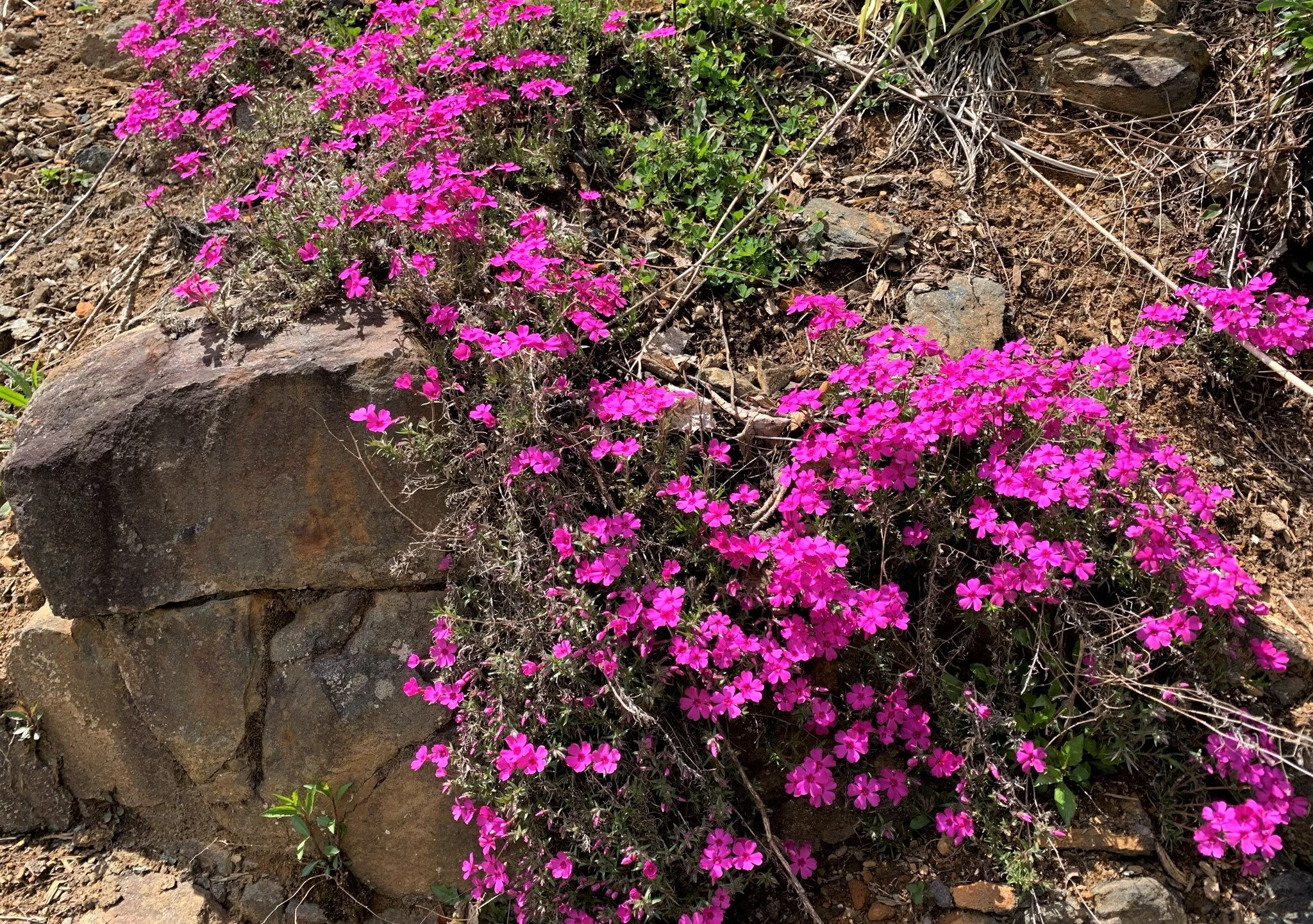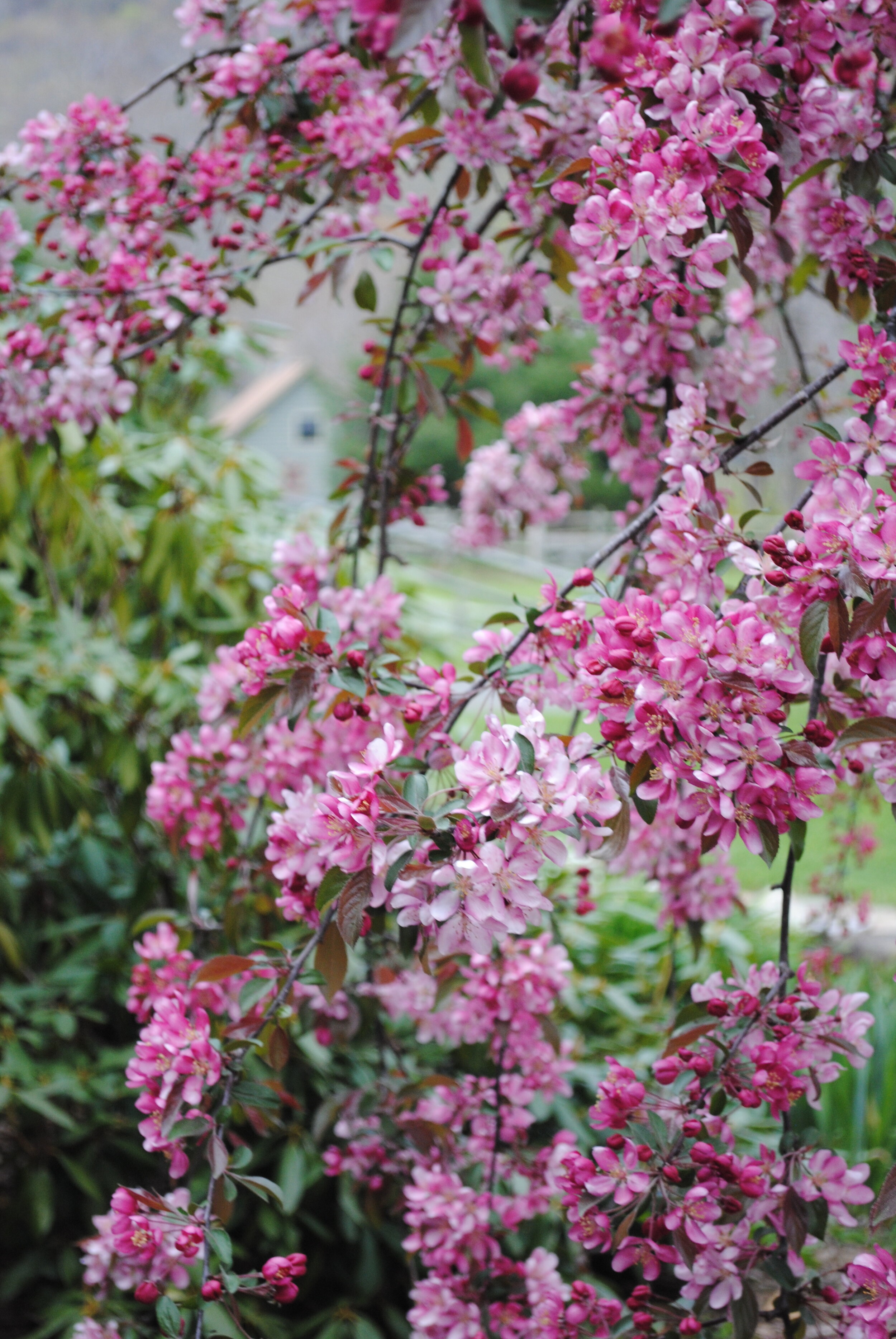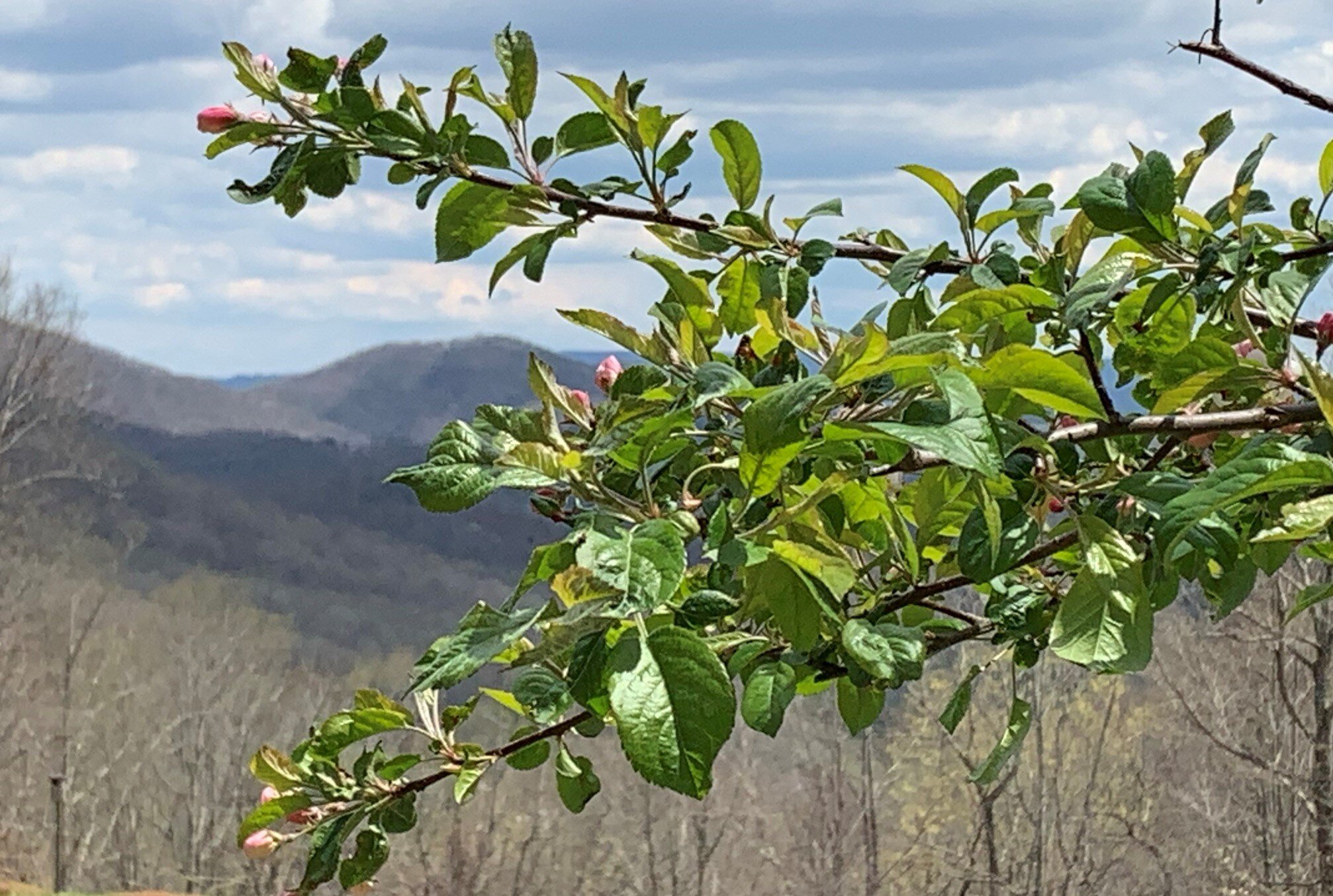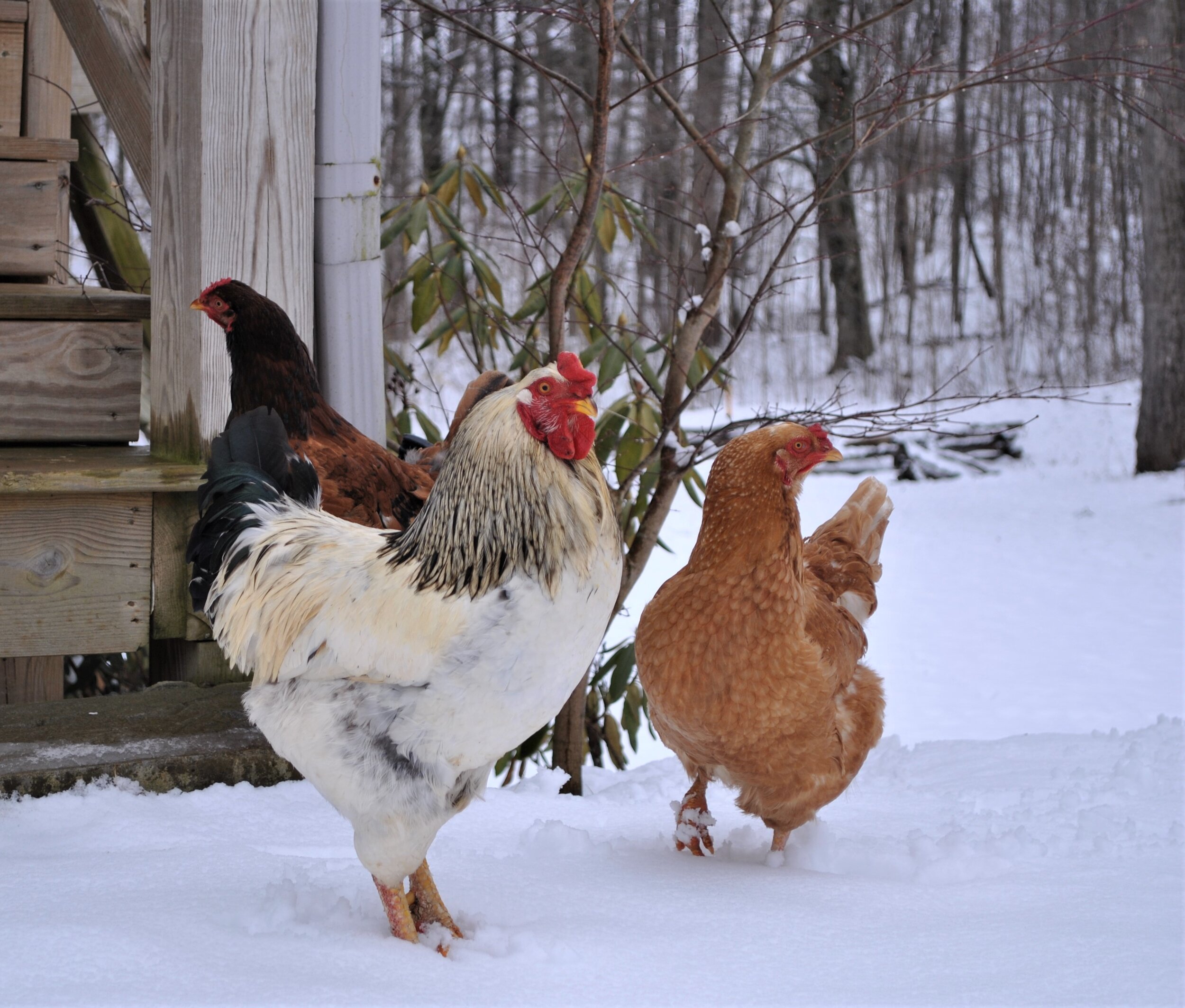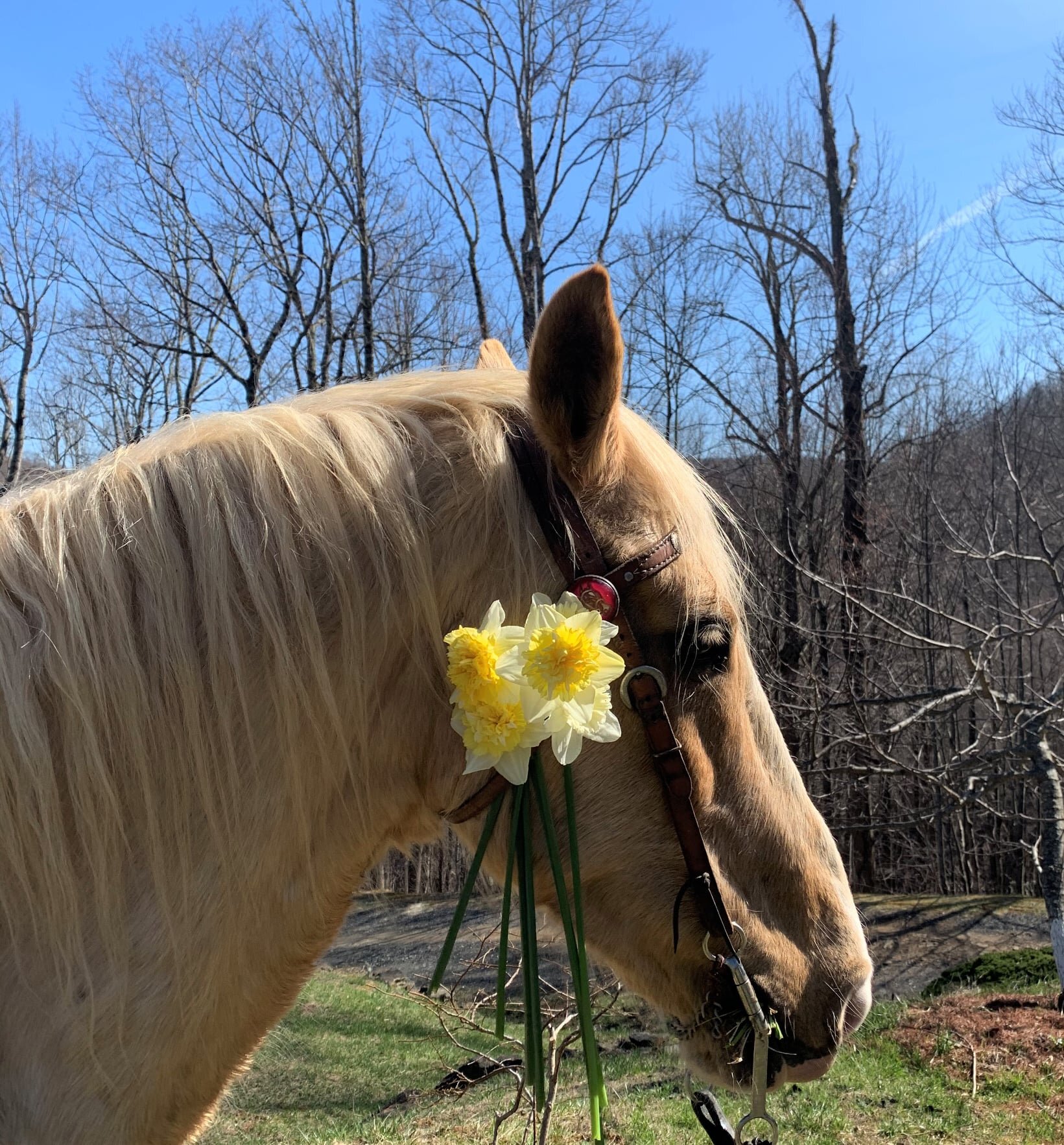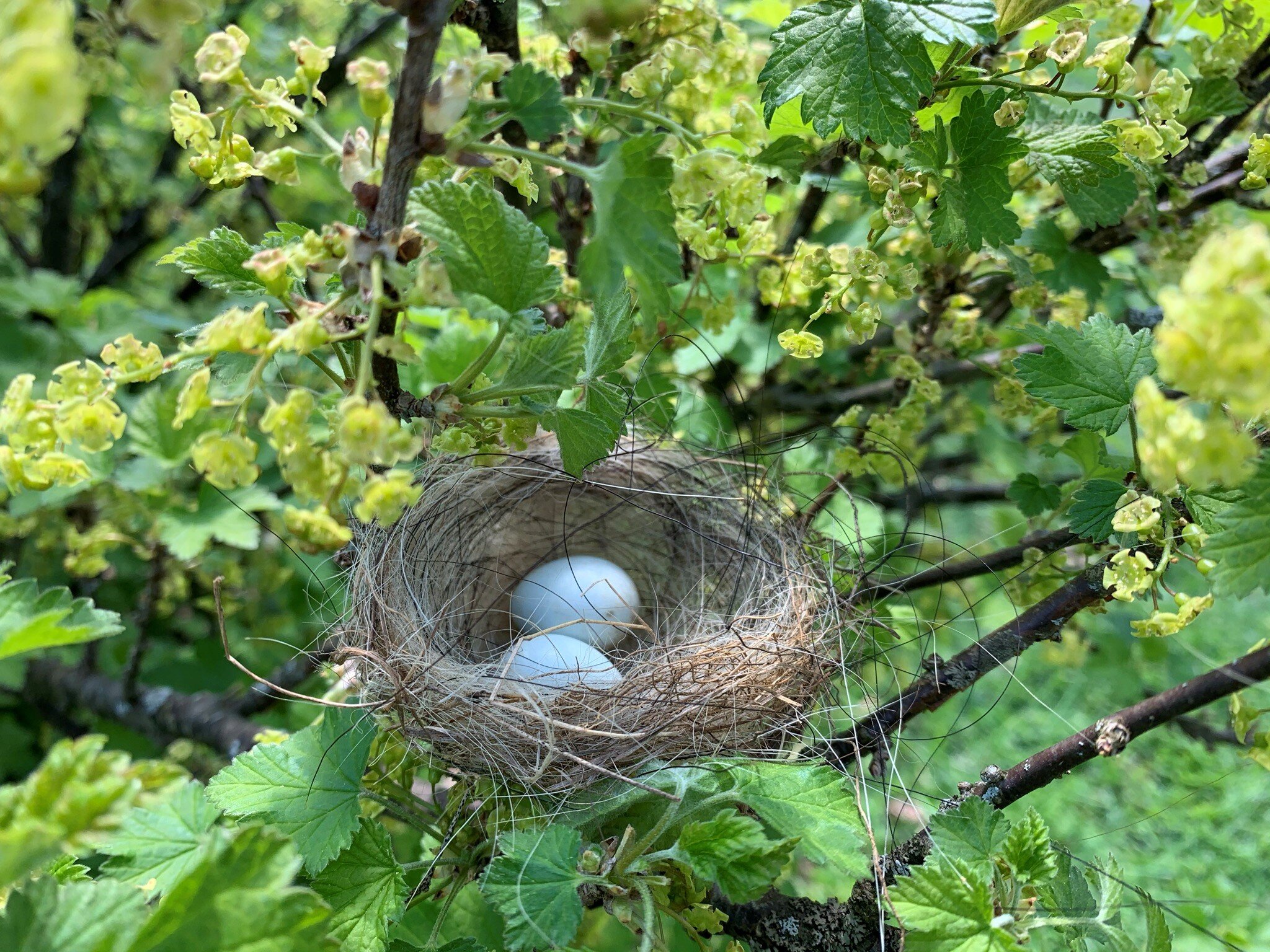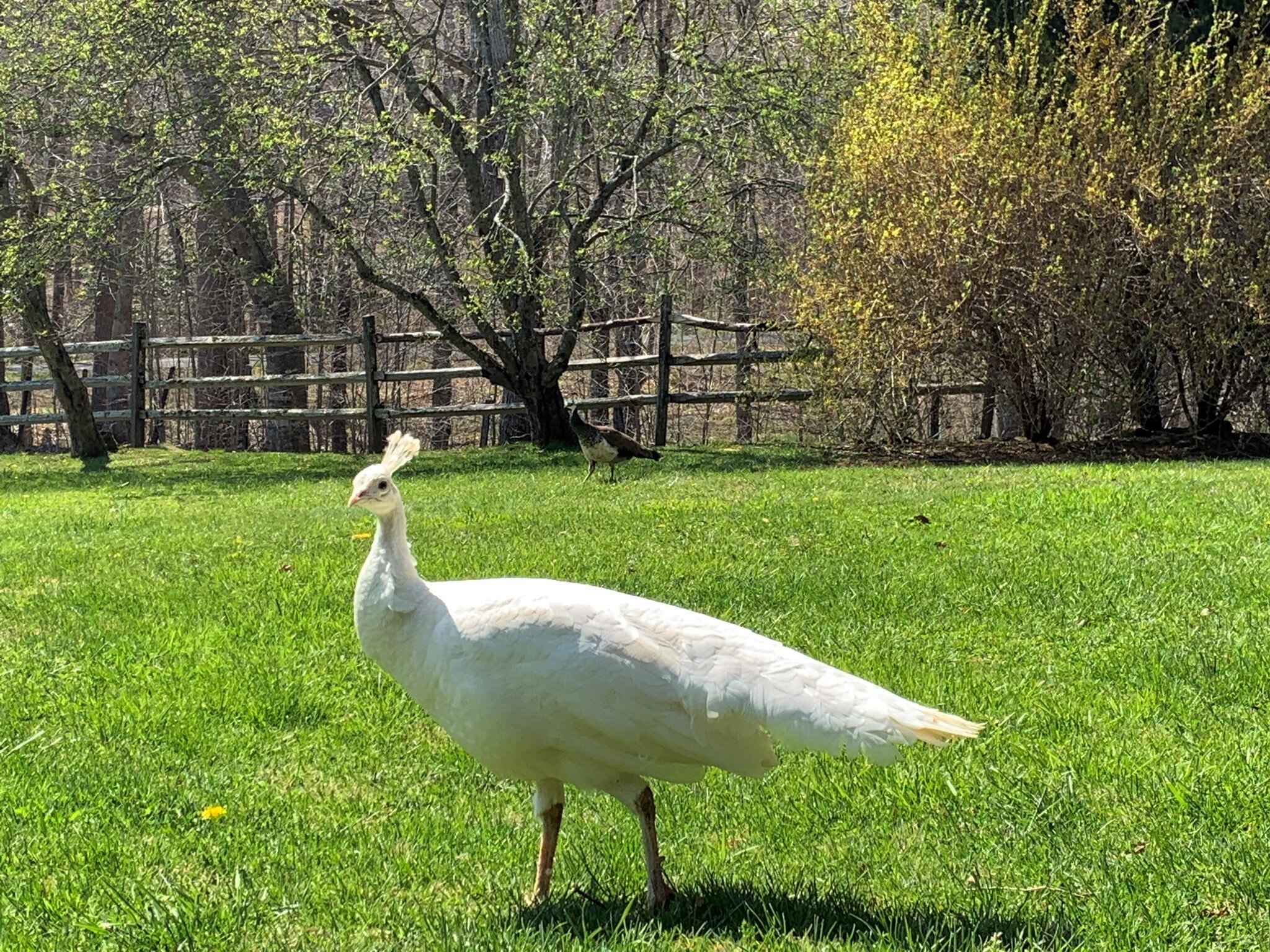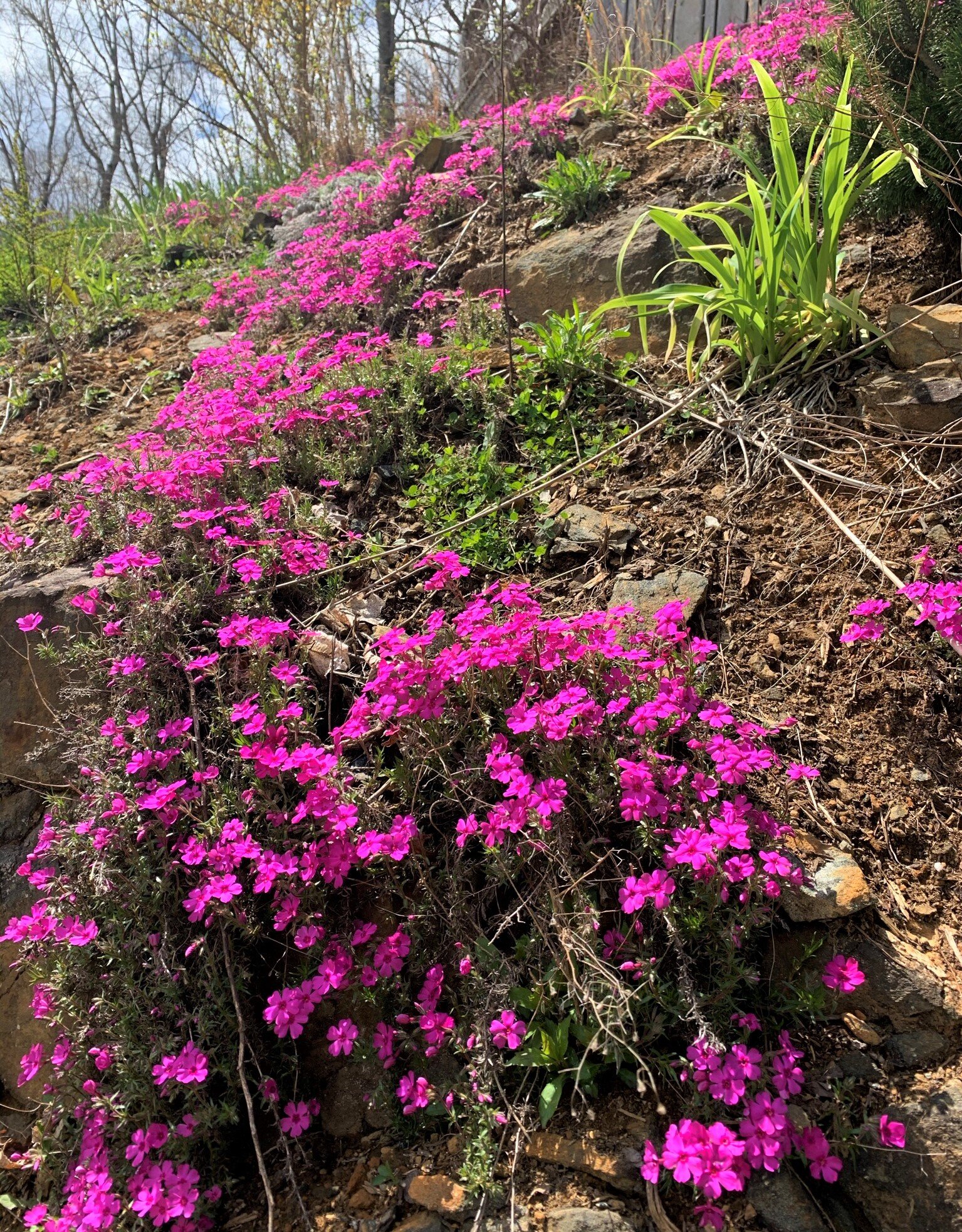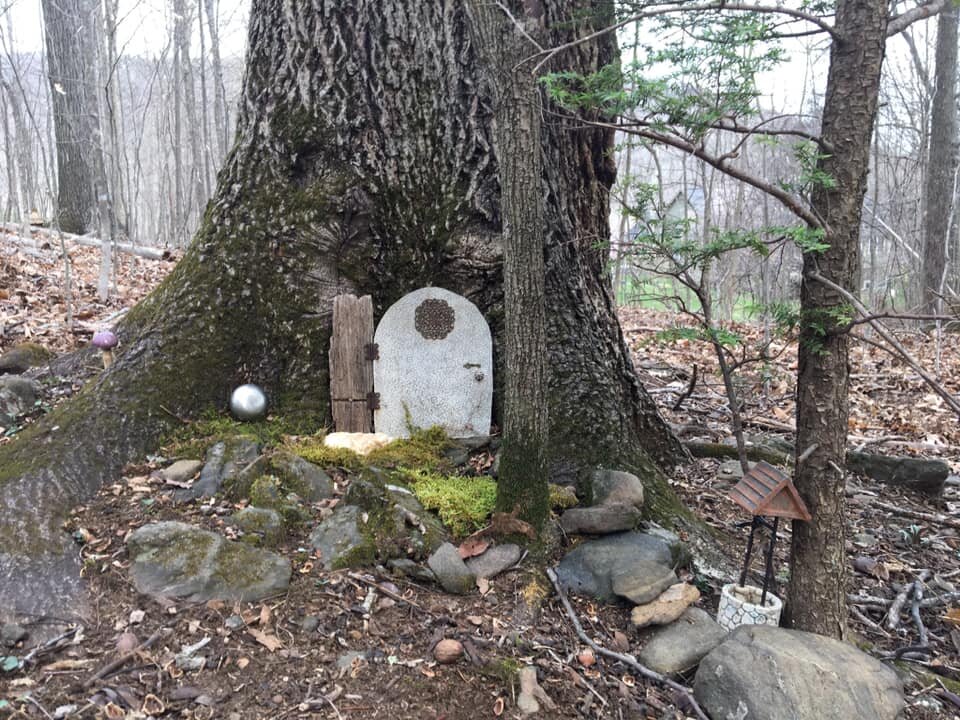By Betty Miller Conway
It’s the time of the year that we hold our breath. In mid-April, the farm is on the very cusp of spring. The days are getting warmer, but the nights remain chilly. The trees are still mostly bare, but the first murmur of green is visible in the lower valleys. The sarvisberry, wild cherries, and crabapples splash the still-brown countryside with delicate pinks, whites, and reds. The pears, peaches, then apples follow close behind, their tiny buds opening to the bright sunshine. The blueberry bushes redden in preparation for the growing season ahead.
The beauty is fragile. A late frost (not to mention a snow!) could nip those buds and send us plummeting back into winter. Walton and I have had enough of winter—we are tired of wearing our winter coats and coveralls. We long for warm days and spring breezes. Walton spent much of March pruning, fertilizing, and mulching our heirloom apple trees and berry bushes. His work will be for naught if one frigid, windy night freezes the newly emerging buds.
April is almost always mercurial here in the mountains. It might be sunny and sixty one day and then windy with snow showers the next. The early blooming daffodils usually get a blanket of snow before all is said and done. My 98-year-old Aunt Margaret calls this event the equinox snow. She says that it has happened around Easter every year that she can recall. Now that’s a lot of Easters! And a lot of daffodils bending their heads under the weight of snow. I remember one April blizzard that came upon us so quickly that even my faithful Subaru could hardly traverse the unplowed highway home. The church cancelled Palm Sunday service that year because the roads were so treacherous. And so many Easters from my childhood included hunting for eggs while wearing our winter coats!
It’s no wonder, then, that Walton and I watch the weather forecast every night as we dream of pear honey, peach preserves, apple pie, and blueberry chutney. Will those sundrenched days of fall apple harvest come again, with Walton lifting little apple pickers up in the bucket of his tractor to get the highest hanging fruit? It doesn’t seem so long ago that the yellow jackets, drunk on apple sugar, were buzzing around the windfall. Will we be able to count on cold apple cider beside a warm fire once our harvest is in? We wait, and watch, and hope.
The animals at the barn are waiting, too. Josephine the pig emerges from her stall and basks in the sun against the sheltered barn wall, but only in the warm afternoons. Although the poultry senses that warm weather is on the way, the hens are cautious. They lay and cluck, but only a few become broody and incubate their eggs. That will come later, closer to May, when nature understands that it is not as hard to keep the chicks warm when they hatch. The peacocks strut and preen in the sun and call from the treetops on chilly, starlit evenings. Although we diligently watch in hopes of seeing where Blanca the peahen is laying her eggs, she is secretive. We must spot her long white neck and feathery crown later amongst the grasses and hedgerows before a predator does, or else the eggs, and perhaps Blanca herself, will go missing.
Farther in the field, the horses shun their hay in favor of the faint green grass that is slowly starting to fill the pastures. Their warm winter coats are shedding, giving the newly arrived chipping sparrows and other birds the finest of nest building material. The tree swallows beat the barn swallows back and are now swooping and cavorting in the blue sky. And just the other day, for the first time ever, Walton saw a migrating bald eagle on the farm!
Down by the ponds, the willows turn yellow in anticipation of the full feathery green to follow. The peep frogs are chorusing their welcome to spring—an almost deafening sound on an early spring night. In just a few weeks the ponds will be alive with turtles, snakes, tadpoles, and a bellowing bullfrog. But for now, the little peeps create their own lovely symphony.
And up on our stony, steep banks, the phlox blooms with wild abandon, creeping around the easter bells and almost-spent daffodils, defying the cold winds and poor soil. Every year when I see their resilient lavender blooms, I am reminded of the simple poem from my childhood by John Masefield:
I have seen flowers come in stony places
And kind things done by men with ugly faces
And the gold cup won by the worst horse at the races,
So I trust too.
And I do: no matter how ominous the “hard freeze” forecast is, or how hard the cold winds blow in April, I know that spring and then summer will eventually come and that even if our little bunch of fruit trees don’t produce this year, they will the next in an even bigger way. Spring will come in its own time and on its own schedule.
As I walk through the fairy forest, uncovering the little houses that are partially buried in piles of leaves, I imagine the lush vegetation that will soon transform the entire forest into a truly magical place with birds singing in the treetops and butterflies flitting on flowers. I envision them on the woodland phlox that I intend to plant along the path to the hollow tree fairy houses. I’m sure hostas will look beautiful near the big rocks along the stream, if I can only get them in.
But it is too early yet. My mother always said that the earliest you should plant in the mountains is the first day of May. She had a huge garden every summer and spent most of July and August putting up vegetables, so I think she knew what she was talking about. I always think of her in the spring when the dandelions bloom, as it was then that without fail, she’d mention it was time for the goldfinches to return in their bright breeding plumage with their color matching the flowers—dandelions on the wing.
So we resist the urge to put seeds into the cool April soil. (At least one of us does—sometimes Walton plants early, trying to get a head start on nature, despite my mother’s advice) Likewise, we refrain from washing the winter Carhartts and storing them in the back of the coat closet until next winter. Not yet. That day will come, along with the May flowers and the summer fruit. In the meantime, we must be patient.
Nevertheless, on the first warmish day in April, I put on my shorts and sunglasses, and cut the grass, even though it hardly needs it. Even though the lawn may become silver with the next frost. Even though it may be under a foot of snow soon after. It feels good to sit on the lawn mower again. By July I will be tired of mowing, but today the smell of the newly mown grass is like perfume.

